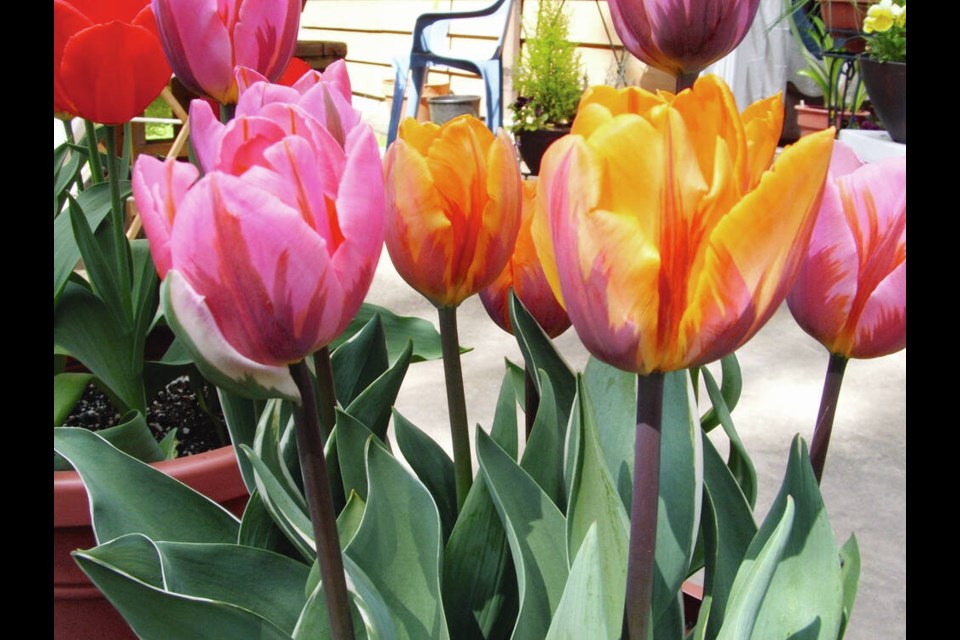Dear Helen: In a recent column you mentioned the value of trying new varieties of favourite vegetables and flowers occasionally, for comparison and potential upgrading of plantings from year to year. How do you find and select varieties for comparing with ones you usually grow?
M.R.
I find most “trial” varieties by browsing through seed and garden catalogues as they arrive each year. Print catalogues offer a relaxing, thorough reading. When using online catalogues, I click on vegetables and flowers of special interest and look for promising varieties in each one.
Both print and online catalogues often have listings of the year’s new variety introductions. These are often useful for finding something interesting to grow.
Over the years, among the many varieties of shelling peas I’ve grown, Green Arrow has emerged as the most reliable and productive in my garden. As a result I’ve grown only that variety, until I noticed Grundy-Perfect Arrow in the William Dam Seeds catalogue.
I have given this variety a short length at an end of both four-metre double rows of peas. So far, on both the early and later April seedings, the Grundy plants are noticeably taller and more robust than Green Arrow. It’s early days yet, but I’ll be monitoring these plantings with interest.
I’m trying several new varieties of both corn salad and cosmos to compare with the ones I usually plant.
Sometimes I come upon new varieties just by noticing plants and asking questions. Very recently, at my local Farmer’s Market, I saw a beautiful bronze-red mini-romaine lettuce for sale at the stall of a nearby farm. I know that, like me, these growers like lettuces from Johnny’s Selected Seeds, an employee owned seed company. I asked whether it was Cegolaine, my favourite bronze-red mini-romaine from Johnny’s. No, they said. It is Breen — a lettuce I’ll be featuring in my garden next year.
Dear Helen: I have daffodils, tulips and hyacinths in three large pots. What shall I do with them after their bloom time? Leave them in their pots? Do I keep watering them?
W.D.
This question arrives in my mail every year as people enjoy the beautiful displays of potted spring flowering bulbs on their patios and decks and begin to wonder how to manage the plants and bulbs after flowering is finished.
If you have no available open garden space your options are limited. If you, understandably, are reluctant to discard the bulbs, look to friends with gardens who might want to plant them.
Be aware that, after growing and blooming in the confines of a pot, bulbs will be significantly depleted. If the bulbs are for saving, the first thing to do is remove faded flowers and let the plants die down naturally, reducing water gradually as they begin to wilt.
One way to manage this stage is to wait until the tops have all dried off and harvest the bulbs for storing in a cool, dark place until planting time in early autumn.
Another option is to unpot the plants after they have flowered and been dead-headed and dig them into the garden for dying back. Here, you have more choices. You can leave the entire clump whole, firm it in carefully into good soil that is moderately damp, and dig the bulbs later for storing.
I usually sidestep the digging and storing part by upotting the bulbs, separating them carefully and planting them to die back in places where they are to be left to bloom again. They can be planted between shrubs and perennials in ornamental beds, or used to set up a spring “cutting garden” of bulb flowers.
The bulbs may need a year of plumping up in good garden soil before they return to full blooming status, but placement in garden beds is their best chance of flowering well again.
GARDEN EVENT
Sooke tour. The Sooke Philharmonic Society’s fundraising Sooke Secret Garden Tour will return, after a four year absence, on Saturday and Sunday, June 1 and 2, 10 a.m. to 4 p.m., with an outdoor Garden Concert on Sunday, 4:30, at 3183 Robinson Rd. The self-guided tour will be of eight private gardens, where there will be musical performers, artists and artisans, vendors, and master gardeners. Some garden owners will have plants for sale. Tickets at the Sooke Region Museum on tour day. Pharmasave Sooke is another ticket source. Or order tickets ($40) at .



